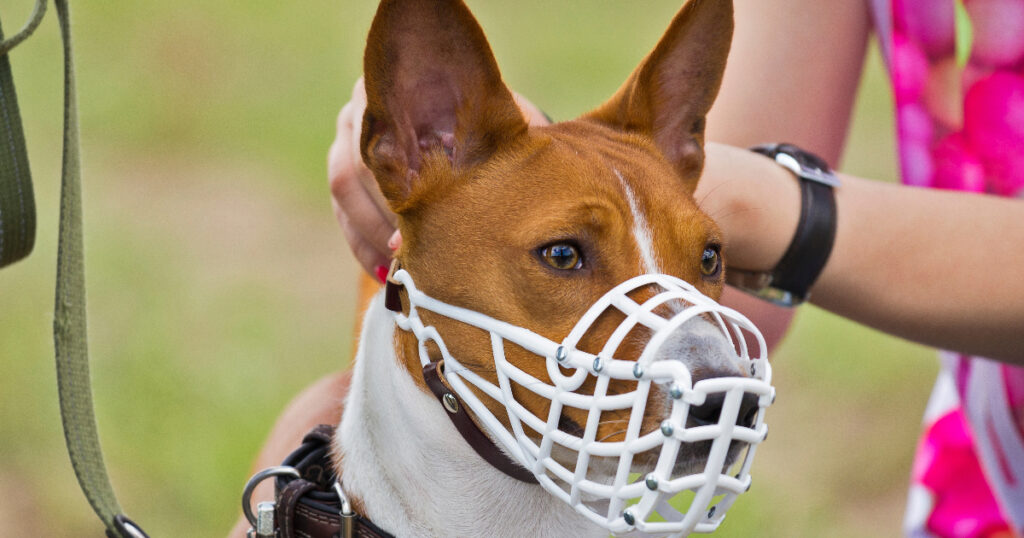Electric dog collars are controversial training tools used to correct unwanted behaviors in dogs. They use electric current passing through metal contact points on the collar to give dogs a signal, warning, or correction. The amount of current, length of stimulation, and how it’s triggered varies by collar type.
Supporters believe e-collars are effective for obedience training, while critics argue they are inhumane and dangerous. Before considering an e-collar, research alternatives and consult an experienced professional trainer. Improper use risks physical and psychological harm.
How Do Electric Collars Work?
Electric collars have a transmitter that communicates remotely with a receiver on the collar strap. When triggered, current passes from the contact points through the dog’s skin. Most collars have adjustable levels of stimulation.
There are two main types of e-collars:
- Shock collars use high voltage to deliver a painful shock as negative reinforcement. They are activated manually by the handler via remote.
- Stimulation collars use lower voltage vibration or tingling sensations. Some trigger automatically, others are remote-controlled.
Voltage ranges from 500 volts to 10,000 volts for shock collars. Stimulation collars use 4 to 100 volts. Duration can be momentary or continuous. Cheaper models tend to have higher voltages and intensities.
Controversy Around Electric Collars
E-collars are controversial due to risks of misuse, lack of regulation, and disputes over their humaneness. Critics believe shocks are inhumane, cause distress, and damage trust. Supporters say modern collars are safe when used correctly.
Both praise and punishment carry risks of unintended fallout when overused, timed badly, or administered by unskilled trainers. Poor timing and excessive use of shocks risk fear, anxiety, confusion, and aggression in dogs. However, complete avoidance of corrections makes training very difficult for some dogs.
Potential Dangers of Electric Collars
Improper use of e-collars risks both physical and psychological harm to dogs:
- Burns or skin damage at the contact points, especially with prolonged use. Cheap collars with exposed prongs pose the greatest risk.
- Neck or spine injuries from excessive force, especially in smaller dogs. Jerking on a leash while shocking multiplies the strain on the neck.
- Learned Helplessness. Dogs subjected to random, unavoidable shocks can become depressed, shut down, or extremely stressed.
- Fear, anxiety, and aggression, if the collar is associated with specific people, animals or environments. Poor timing conditions dogs to expect pain around triggers.
- Confusion, if the dog doesn’t understand how to avoid the shocks. Timing is key for conditioning the desired behavior.
Are Electric Collars Safe When Used Correctly?
Responsible use minimizes risks but does not fully eliminate them. The potential for misuse makes e-collars inappropriate for inexperienced or unskilled trainers. Key factors for safer use include:
- Proper fit and use of appropriate voltage level to avoid injury
- Using the lowest effective setting
- Timing shocks properly to mark unwanted behavior
- Gradually fading use of the collar as training progresses
- Monitoring the dog’s stress levels
- Avoiding excessive use that causes sensitivity loss
Even when used carefully, dogs may still associate the collar with fear or pain. The risks depend on the individual dog and handler’s skill level.
When Are E-Collars Most Effective?
E-collars can suppress unwanted behaviors, but may not teach the dog what you want them to do instead. They work best for:
- Dogs over 6 months old with context training
- Stopping undesirable behaviors like chasing, biting, or aggression
- Proofing obedience commands off-leash
- Getting attention for deaf or highly driven dogs
For basic obedience, positive reinforcement usually works better and poses fewer risks. E-collars require extremely precise timing to be effective. Most pet owners lack the skill to use them humanely.
Alternatives to Electric Collars

Before considering an e-collar, explore positive alternatives to manage and train dogs without pain or intimidation:
- Proper exercise, stimulation, and management to prevent boredom and frustration. Dogs behave better when their needs are met.
- Head halters like the Gentle Leader that steer the head without neck strain.
- Front-clip harnesses that redirect pulling down the chest instead of the trachea.
- Muzzles to prevent biting and lunging, while allowing panting and treats.
- Professional force-free training to reinforce desired behaviors. Find an accredited trainer who matches your philosophy.
Getting the Best Results from E-Collars
If choosing an e-collar after weighing the pros and cons, follow these tips to maximize effectiveness and minimize risks:
- Consult an experienced trainer on proper introduction, settings, and timing. Do not use without guidance.
- Start with the lowest effective setting to avoid over-stimulating. Increase only if needed.
- Use the minimal stimulation needed to achieve results. Don’t rely on the collar alone.
- Condition the dog to associate the sensation with commands first before using it as a correction.
- Time activations precisely to mark unwanted behaviors. Random shocks can cause confusion or panic.
- Monitor dogs closely for signs of stress like lip licking, yawning, shaking, or avoidance.
- Phase out the collar gradually as the dog’s obedience improves using positive reinforcement.
Frequently Asked Questions
What types of collars deliver electric shocks?
The two main types are shock collars and stimulation collars. Shock collars deliver a high-voltage painful shock when triggered by the handler remotely. Stimulation collars use lower voltage to deliver a tingle, vibration, or static pulse, sometimes automatically triggered.
Are electric collars safe for small dogs?
Small dogs are at higher risk of neck injury from e-collars if the force is excessive. Use the lowest effective settings and minimize jerking on the leash while shocking to reduce strain on the trachea. Consult a trainer experienced with small breeds.
When should electric collars not be used?
Avoid using e-collars without guidance, on dogs under 6 months old, or as a first resort before trying positive reinforcement. They require precise timing and skill for humaneness. E-collars can make behavior worse if used improperly.
What are the best alternatives to shock collars?
Head halters, front-clip harnesses, muzzles, and professional force-free training are effective and humane alternatives. Meeting a dog’s exercise, stimulation, and training needs often resolves problem behaviors without electric collars.
How can I use an e-collar most effectively if I choose to try one?
Consult an experienced trainer, start at the lowest effective level, use proper timing, monitor stress, phase out the collar gradually, and combine with positive reinforcement. Precise timing and execution are essential. Avoid relying solely on the collar.
Conclusion
While e-collars can be effective for some applications, they also carry risks of misuse and unintended consequences.
Positive reinforcement and force-free methods should always be tried first. Thoroughly research alternatives and consult experienced trainers to determine if an e-collar is truly needed or appropriate for your dog.
If choosing to use one after careful consideration, follow best practices to reduce risks. Avoid using electric collars without professional guidance.

